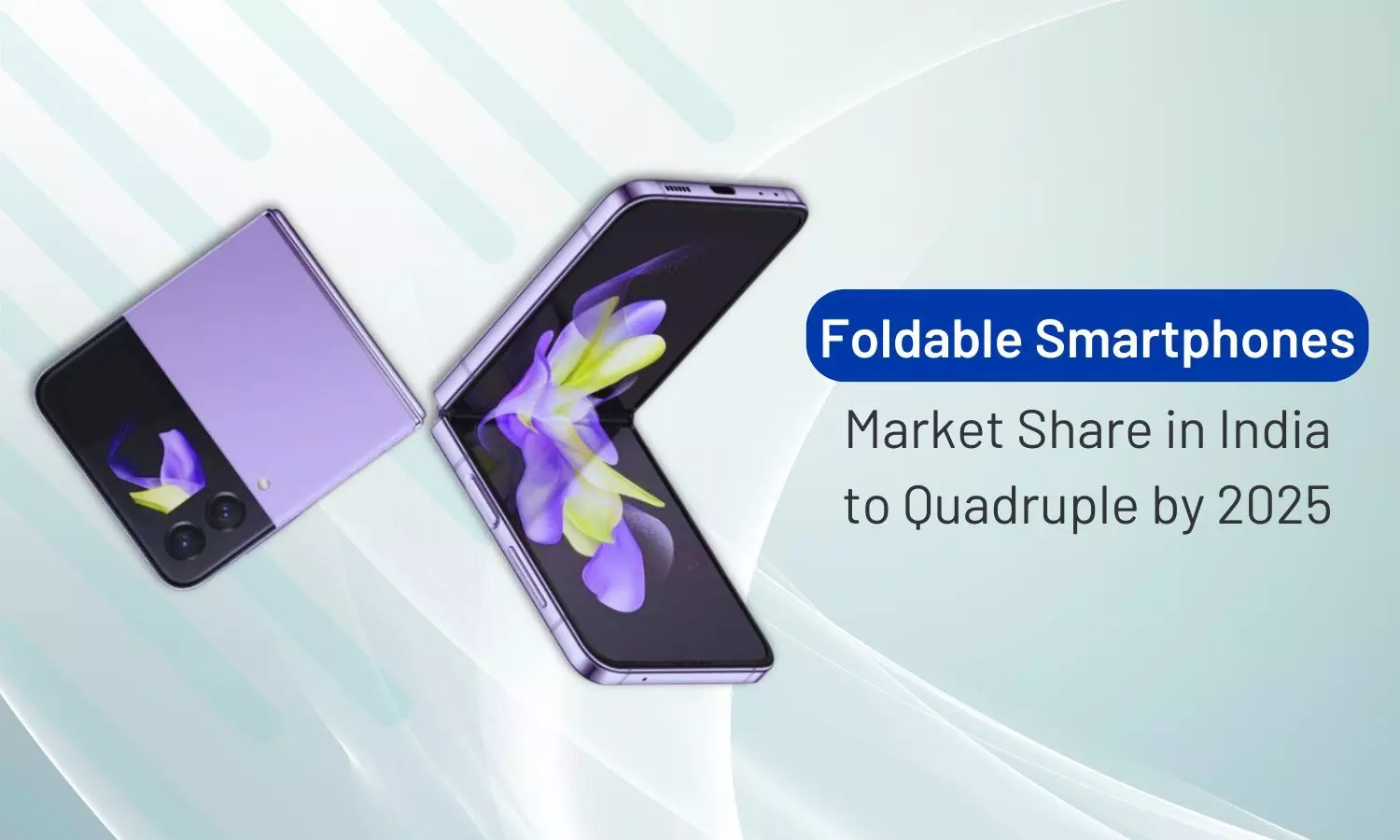Foldable smartphones: India's ultra-premium market set for 400% growth by 2025
Foldable smartphones are revolutionising India's premium segment, projected to reach 35% market share by 2025. Discover key trends, top devices from Samsung and Huawei, and emerging competitors driving this growth.
Foldable smartphones: India's ultra-premium market set for 400% growth by 2025

India’s foldable smartphone market is projected to witness substantial growth, with its share expected to increase fourfold by 2025. According to Counterpoint Research, foldable smartphones in the ultra-premium segment, priced above Rs. 45,000, are expected to capture 35% of the market by 2025, up from just 8% in the first half of 2023.
Key factors contributing to this growth include:
- Current Market Penetration: Although foldable smartphones currently account for only 1% of the total mobile market in India, this segment is anticipated to grow significantly over the next few years.
- Expansion in the Ultra-Premium Segment: Foldables are gaining increased traction within the ultra-premium category, with market share projected to rise to 35% by 2025.
- Rising Popularity Among Female Consumers: Clamshell foldable designs, such as Samsung’s Galaxy Z Flip, have gained popularity, especially among female users. In early 2023, clamshell models represented 82% of total foldable shipments due to their affordability and style.
- Local Manufacturing Initiatives: Samsung has significantly increased local production of its flagship foldables—Galaxy Z Fold 5 and Galaxy Z Flip 5—at its factory in Noida, contributing to the growth of the Indian foldable market.
Comparing Leading Foldable Devices: Samsung vs. Huawei
The foldable smartphone segment is rapidly evolving, with major players like Samsung and Huawei at the forefront. Here’s how Samsung’s Galaxy Z Fold 5 and Huawei’s Mate X3 stack up against each other:
- Operating System:
♦Samsung’s Galaxy Z Fold 5 operates on a refined version of Android, offering enhanced multitasking capabilities due to its close collaboration with Google.
♦Huawei’s Mate X3 uses a modified version of Android that lacks Google services, which can negatively impact the user experience in India.
- Screen Size:
♦Huawei’s Mate X3 offers a larger display, making it more suitable for media consumption and gaming.
♦Samsung’s Galaxy Z Fold 5 has a smaller screen but provides better optimisation for apps, which makes it highly efficient for multitasking.
- Battery Life and Charging:
♦The Mate X3 surpasses the Galaxy Z Fold 5 in battery performance, offering longer battery life and faster charging times.
♦While the Galaxy Z Fold 5’s battery performance is slightly lower, it compensates with an overall better software experience.
- Camera Quality:
♦Samsung’s Galaxy Z Fold 5 boasts superior camera capabilities, particularly excelling in low-light conditions and offering sharper image quality compared to Huawei’s Mate X3.
- Price:
♦Samsung’s Galaxy Z Fold 5 is priced lower than the Mate X3, making it a more attractive option for Indian premium consumers.
- Multitasking and App Functionality:
♦Samsung’s Galaxy Z Fold 5 allows users to run up to three apps simultaneously on its inner display, enhancing productivity for power users.
♦Huawei’s Mate X3 supports multitasking but is limited by its lack of Google services, which could reduce its appeal for many Indian consumers.
Emerging Competitors in the Foldable Market
The foldable smartphone space is seeing the entry of new players, providing increased competition and more affordable options for consumers:
- Xiaomi: Xiaomi’s Mix Fold series delivers strong performance at a lower price, making it an appealing option for consumers looking for an affordable foldable.
- Oppo: Oppo’s Find N series features a more compact design and durable construction, positioning it as a promising contender in the foldable market.
- TCL: TCL is introducing foldable devices at a budget-friendly price point, thereby lowering the barrier to entry for consumers interested in this innovative form factor.
Future Outlook for Foldable Smartphones in India
Several trends indicate a bright future for foldable smartphones in India:
- Market Share Growth: The foldable smartphone segment is projected to grow from 8% of the ultra-premium market in 2023 to 35% by 2025.
- Increased Competition: With brands like Xiaomi, Oppo, and TCL entering the market, consumers are likely to benefit from a broader range of foldable options, including more affordable models.
- Localised Manufacturing: Samsung’s initiative to manufacture its premium foldable smartphones locally will further stimulate market growth, making these devices more accessible to Indian consumers.
- Consumer Demand: The foldable form factor, combined with cutting-edge technology and stylish design, continues to attract a wide range of users in India. As foldables become more mainstream, they are expected to capture a larger share of the ultra-premium smartphone segment.
Conclusion
India’s foldable smartphone market is poised for rapid expansion, driven by premium brands, heightened competition, and local manufacturing efforts. As foldable devices gain mainstream popularity, they are expected to play an increasingly significant role in the country’s ultra-premium smartphone segment. By 2025, foldables will not only revolutionise the way we interact with mobile technology but also solidify their presence as a key player in the premium smartphone market in India.

